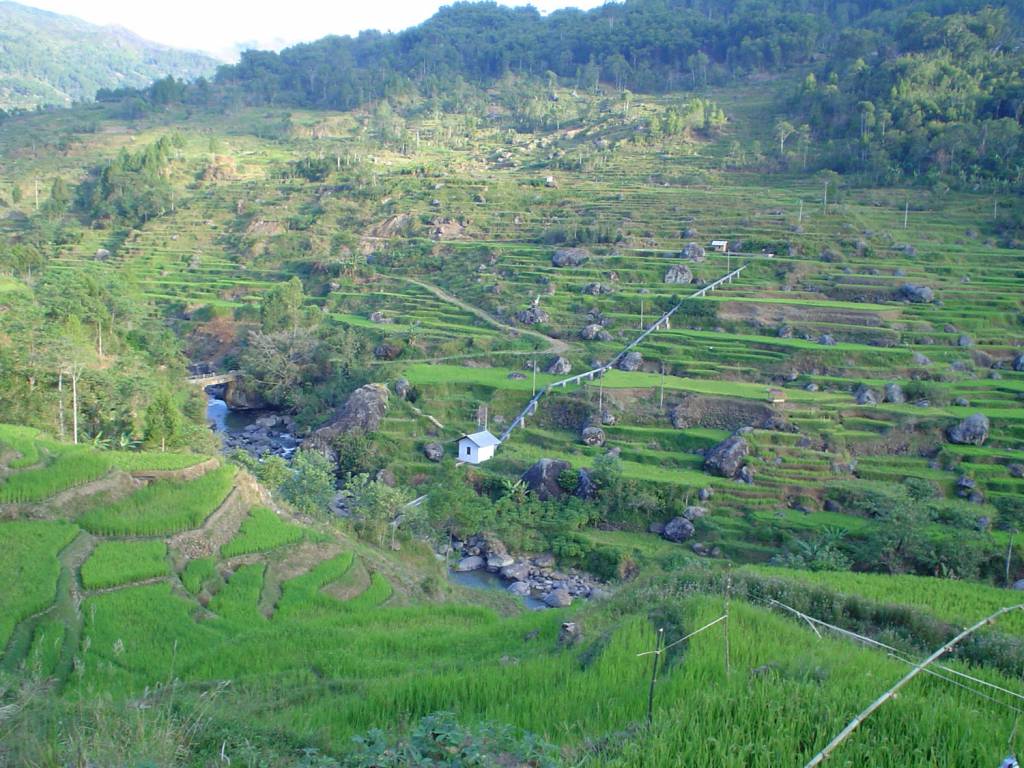With an average increase in energy use of 7% per year, the fourth most-populated country in the world is continually striving to meet its peoples’ electricity needs, especially in remote areas.
The Indonesian government has launched a number of programs, such as Bright Indonesia and Equitable Energy, to provide access to electricity in frontier, outer islands, and disadvantaged areas (Terdepan, Terluar, Tertinggal, or 3T) using renewable energy. Unfortunately, at the same time, it is also planning on building power plants as large as 35,000MW, the majority of which use dirty energy sources such as coal.
This choice has been criticised by 350.org’s campaign team in Indonesia:
“Equitable Energy will not be achieved if it is built upon the suffering of people who breathe in dirty air thanks to the burning of coal, environmental destruction caused by mining practices, and the disappearance of local cultures and agricultural lands eroded by new power plant development.”
Indonesia is aiming for a 23% share of clean and renewable energy in its national energy mix by 2025; the current rate is only 6-7%. Meanwhile, anti-coal and pro-clean and renewable energy activists are working together to build a mass community movement to push for an overall policy change so that Indonesia can begin the just transition towards 100% renewable energy as soon as possible.
Regardless of the fact that national policies do not support the growth of the clean and renewable energy industry, many community initiatives have emerged. Tri Mumpuni, a clean and renewable energy pioneer in Indonesia, says “Indonesia has many mountain ranges with springs that provide the water for rivers, so [it would be] appropriate and possible to develop renewable micro-hydro energy.” Together with IBEKA, the People Centered Business and Economic Initiative, she has empowered members of remote communities across Indonesia to become involved in developing micro-hydro power plants.
Another example is Sumba Iconic Island, initiated by Hivos in 2009. This program has the ambitious aim of providing 100% locally-produced, renewable energy for the people of Sumba Island. Not only is the program supported by the local community, in 2013 Hivos gained the commitment of the Ministry of Energy and Mineral Resources to push for 100% renewable energy in Sumba.
One program that involves women living in remote areas, Wonder Woman, was started by Kopernik in 2011. Through this program, women are encouraged to use simple solar-powered lighting and environmentally-friendly stoves which not only improve their family’s health and safety but also reduce environmental impacts. The women are also trained on how to sell this clean and efficient technology through micro-social enterprises which can increase household income.
Other community initiatives include biomass stoves developed by GMI (Cute Motorbike Gang) in 2010, which aims to eradicate the reliance of the people of East Nusa Tenggara on kerosene. Also Ecomasjid, initiated by the Indonesian Ulema Council’s Natural Resources and Environmental Protection Institute, in collaboration with the National Movement for One Million Solar Rooftops towards One Gigawatts of Photovoltaics in Indonesia, invites mosques and prayer halls across Indonesia to make the most of solar and biogas energy.
350.org in Indonesia supports the efforts to create an Indonesia free of fossil fuels – “Indonesia Bebas Energi Fosil” by advocating for a rapid transition to 100% clean and renewable energy which is equitable for all. We invite all young people and their communities to join our volunteers, the Climate Rangers, to push and support positive efforts, especially at the local level, with the aim of developing clean and renewable energy while leaving behind dirty energy.
Bahasa Indonesia version of this article are published here

